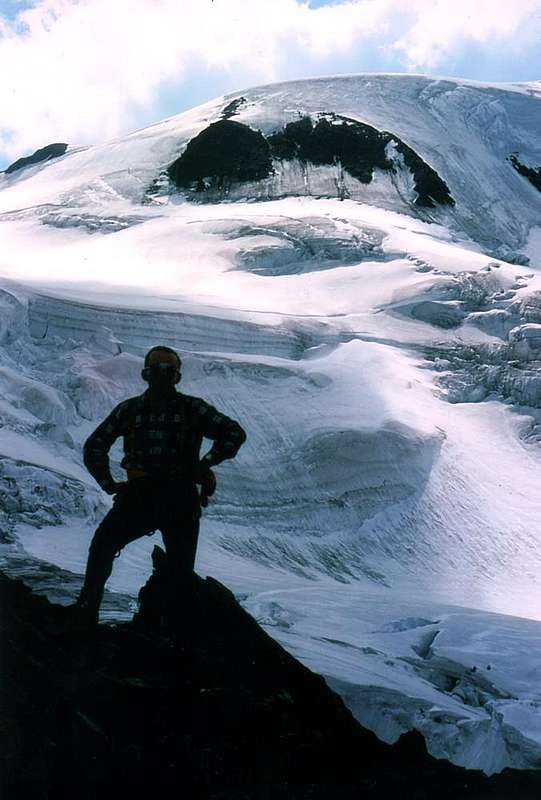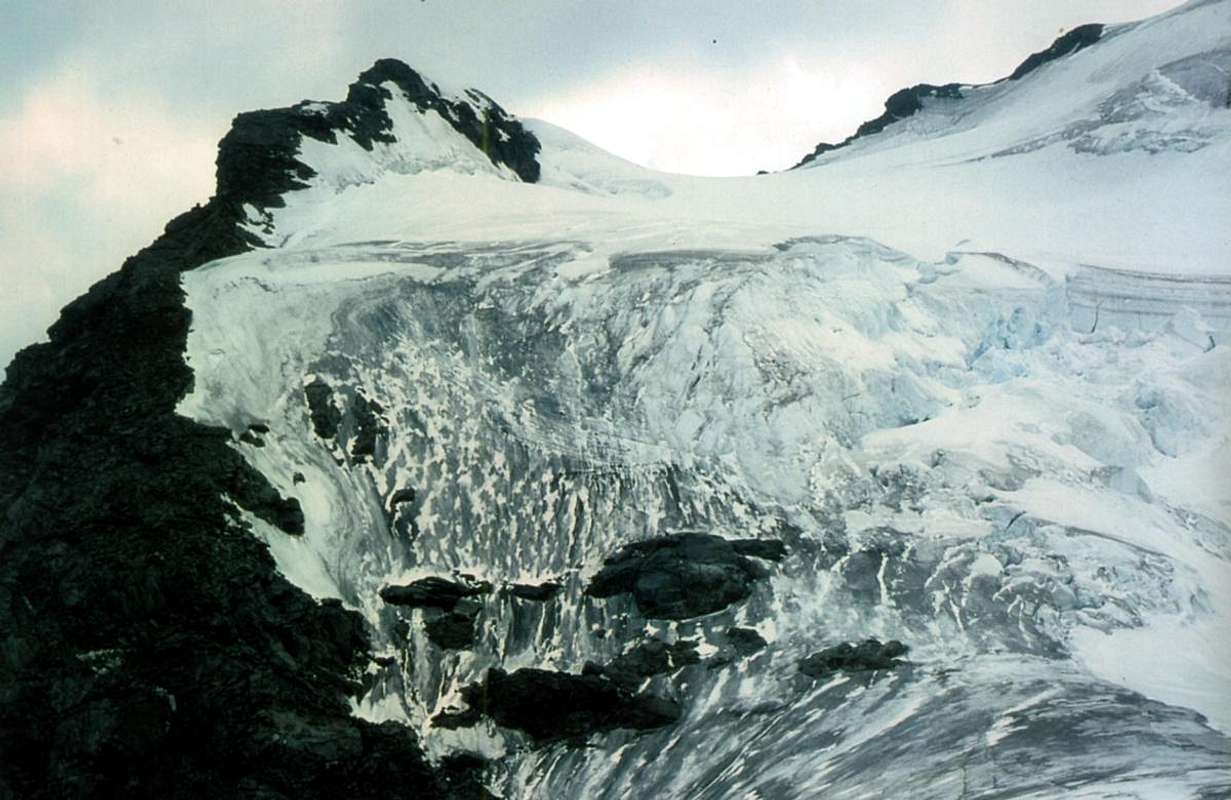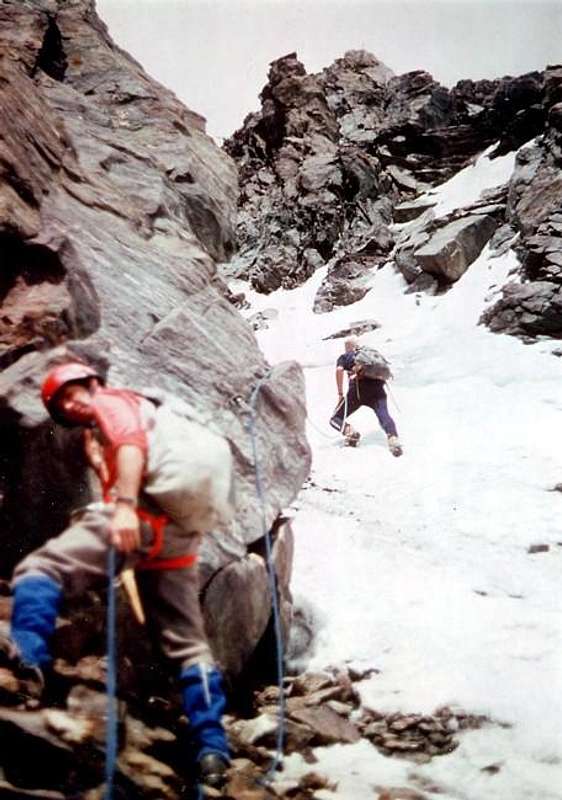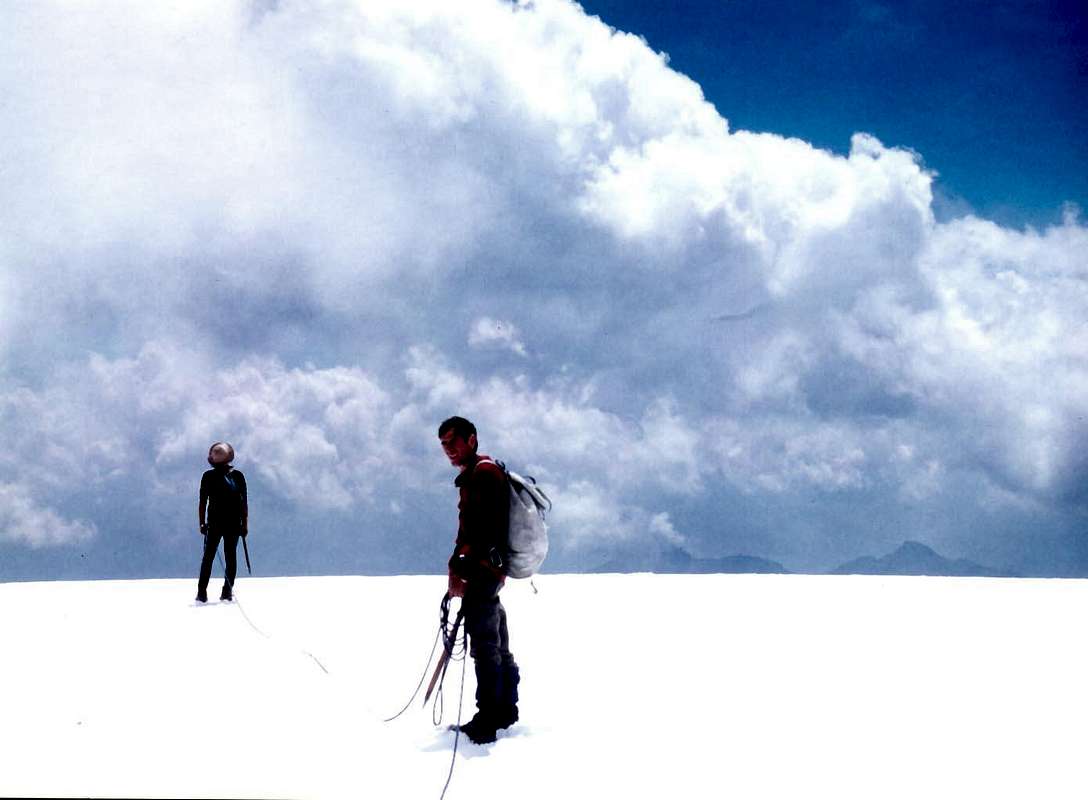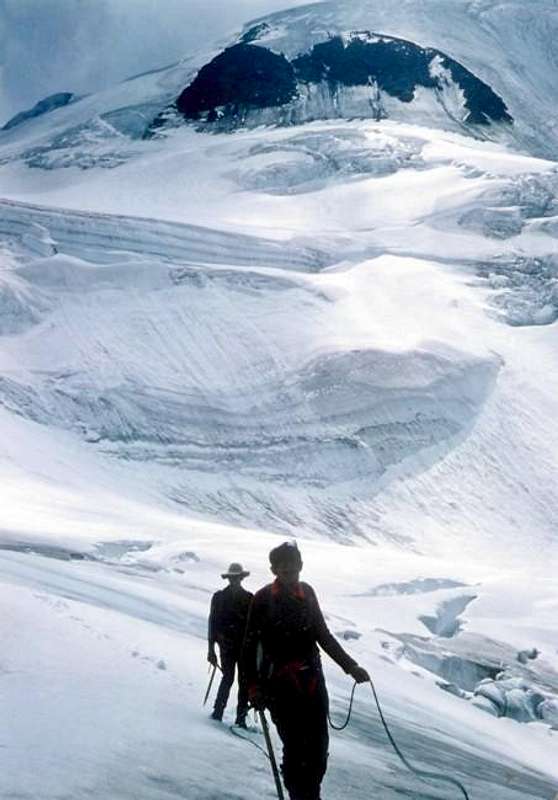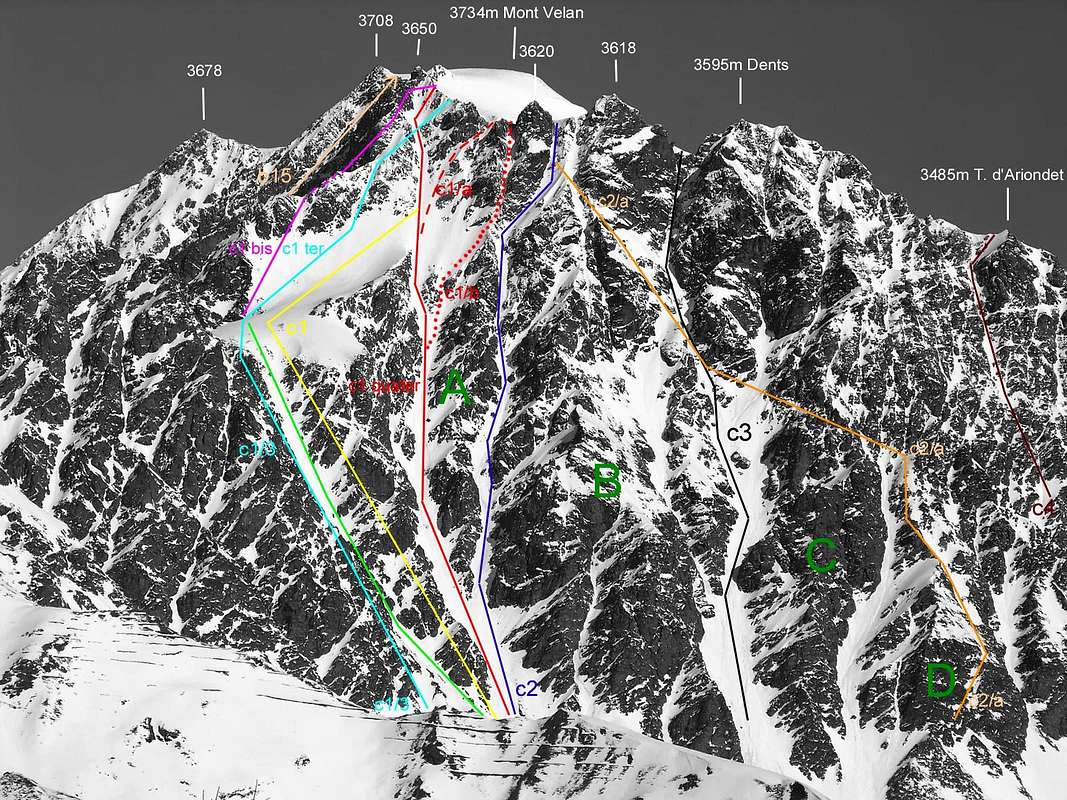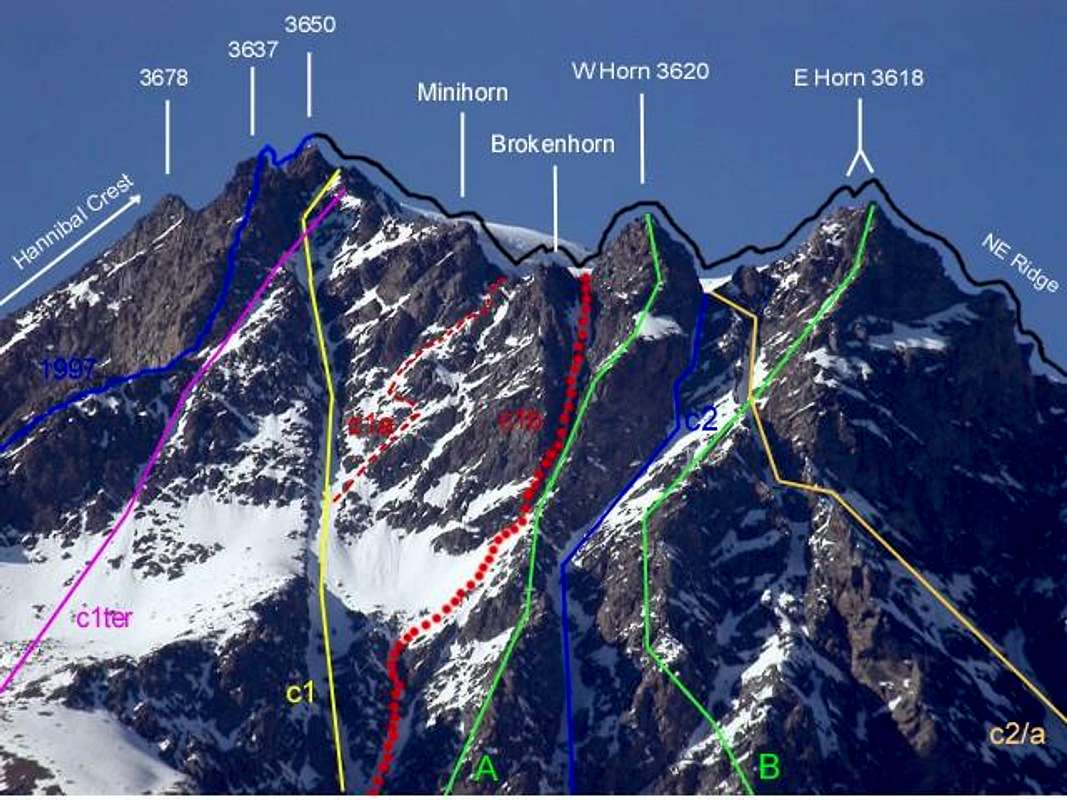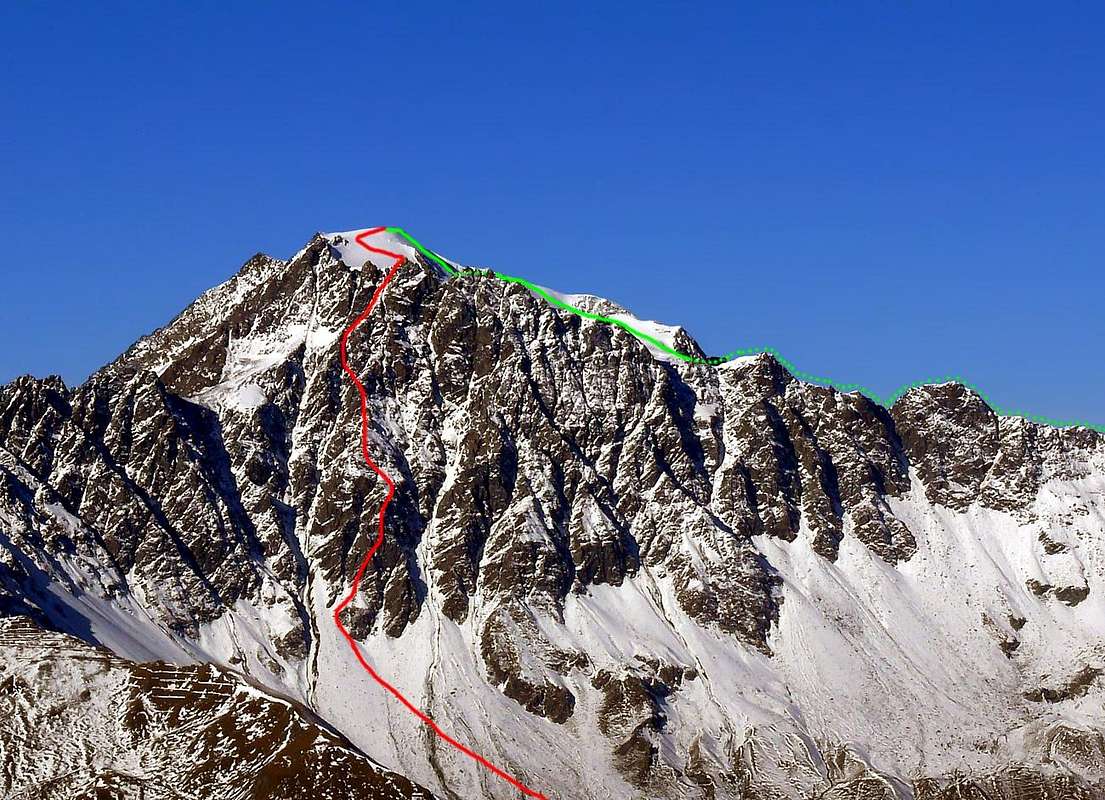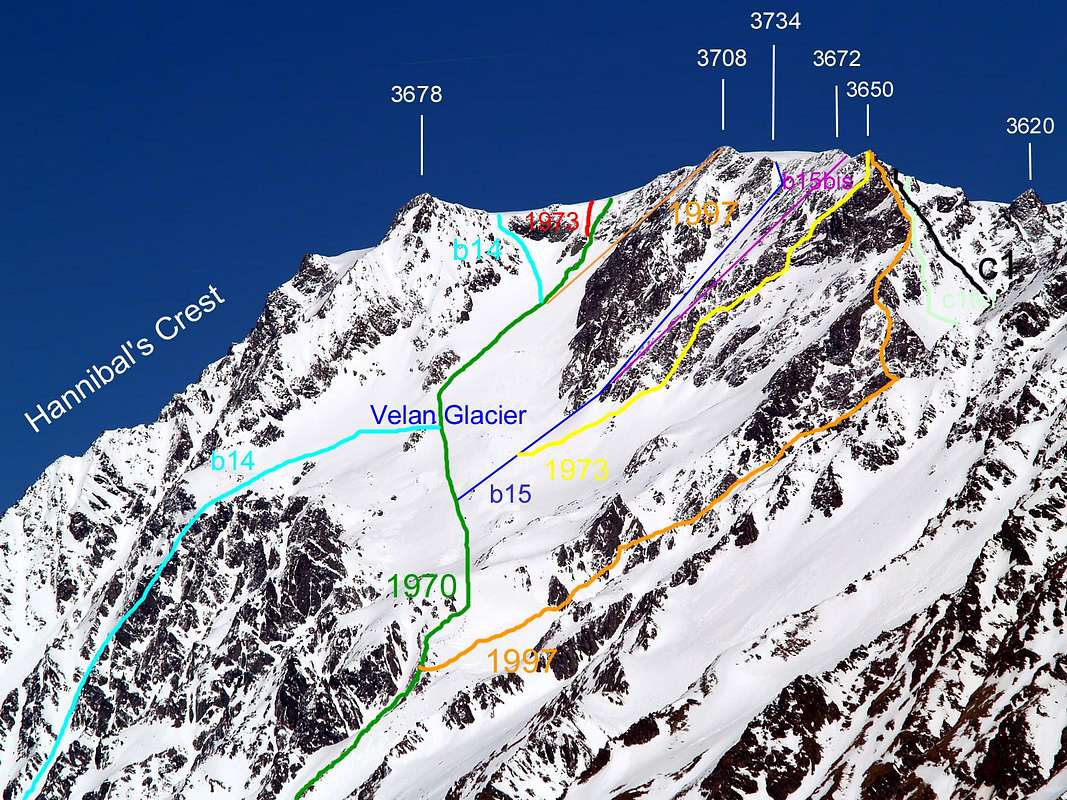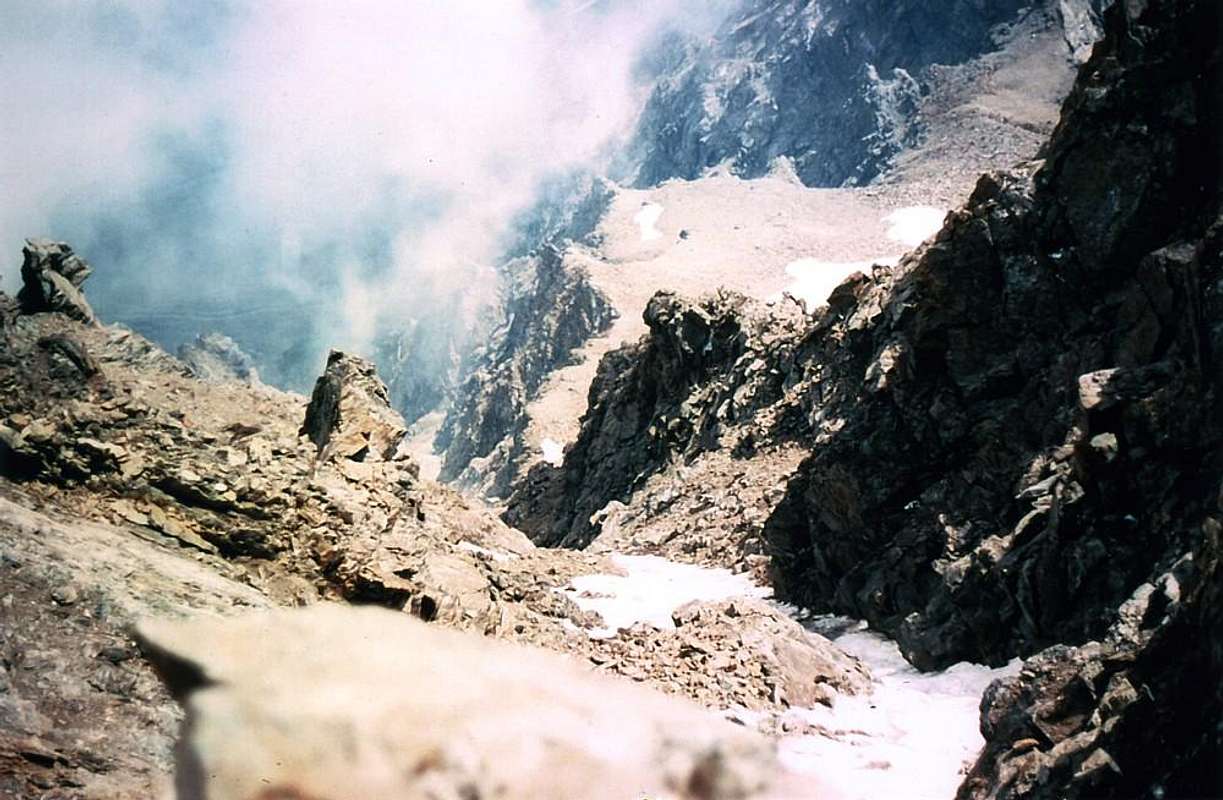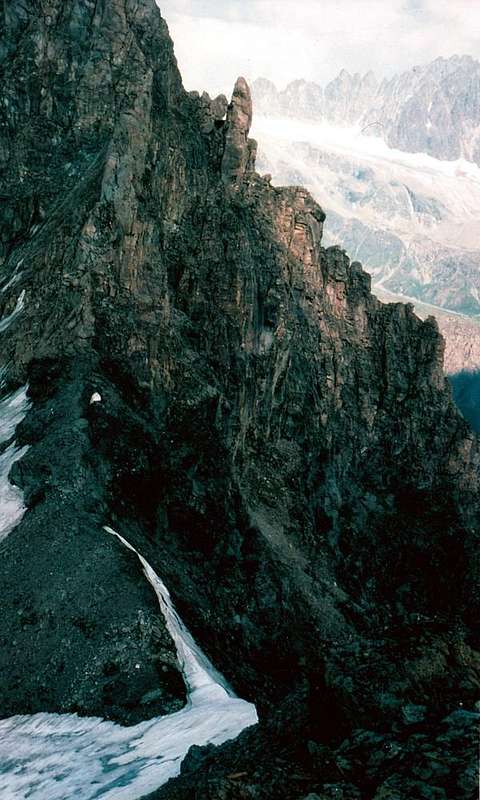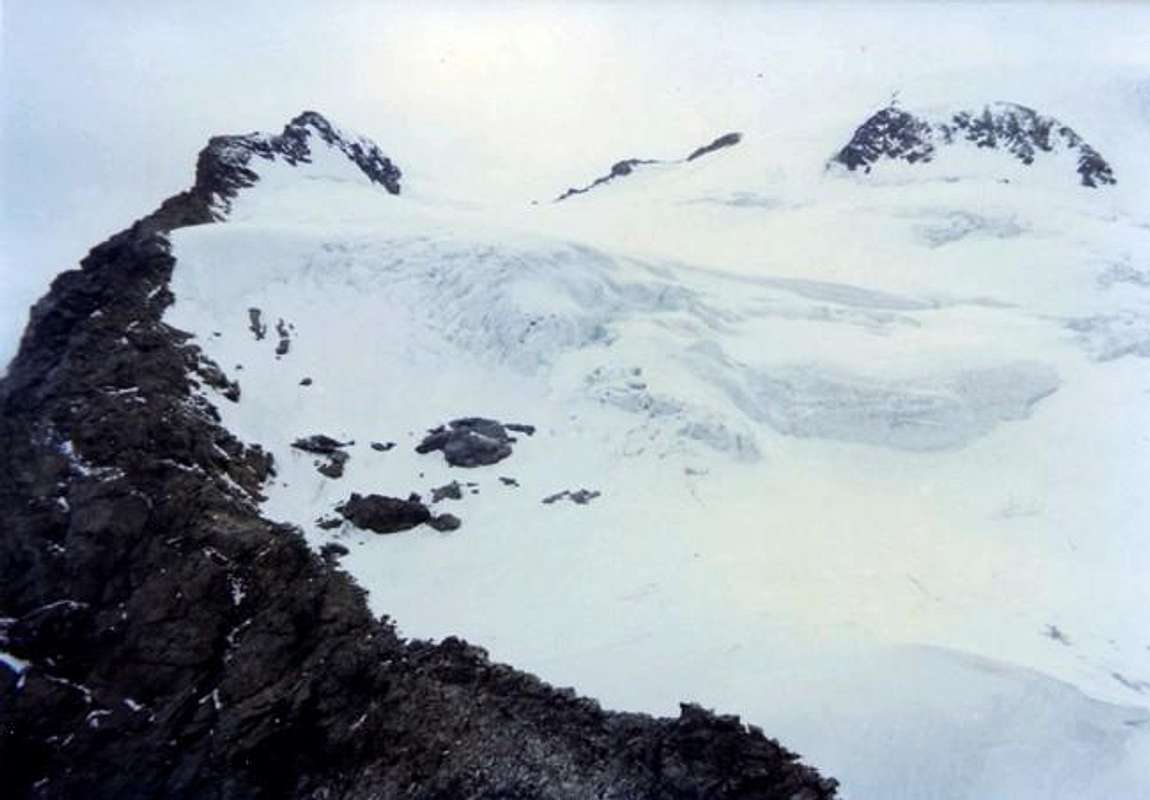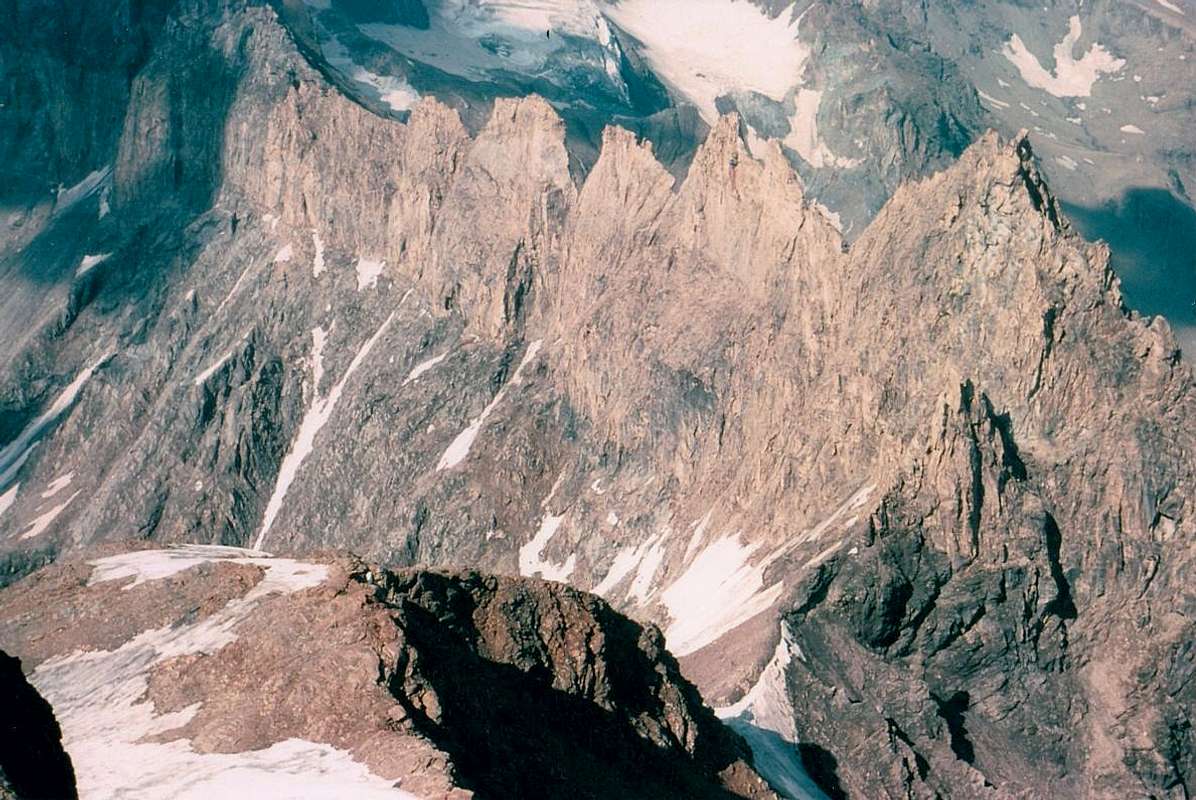-
 2472 Hits
2472 Hits
-
 79.04% Score
79.04% Score
-
 10 Votes
10 Votes
|
|
Route |
|---|---|
|
|
45.88490°N / 7.26119°E |
|
|
Mountaineering, Ice Climbing |
|
|
A long day |
|
|
Class 3 |
|
|
III |
|
|
Note
|
La montagna chiama i suoi figli, ed essi rispondono fedelmente al suo appello… Osvaldo Cardellina, Diario alpinistico, 1964-65 Page texts: @ OsvaldoCardellina "Osva", passed away on May 2, 2022. Page owners: Christian Cardellina e Osvaldo Cardellina. Any updates from September 12, 2022: Antonio Giani, page administrator, friend and climbing companion. Testi della pagina: @ OsvaldoCardellina "Osva", scomparso il 2 maggio 2022. Proprietari pagina: Christian Cardellina e Osvaldo Cardellina. Eventuali aggiornamenti dal 12 settembre 2022: Antonio Giani, amministratore della pagina, amico e compagno di salite. |
Overview
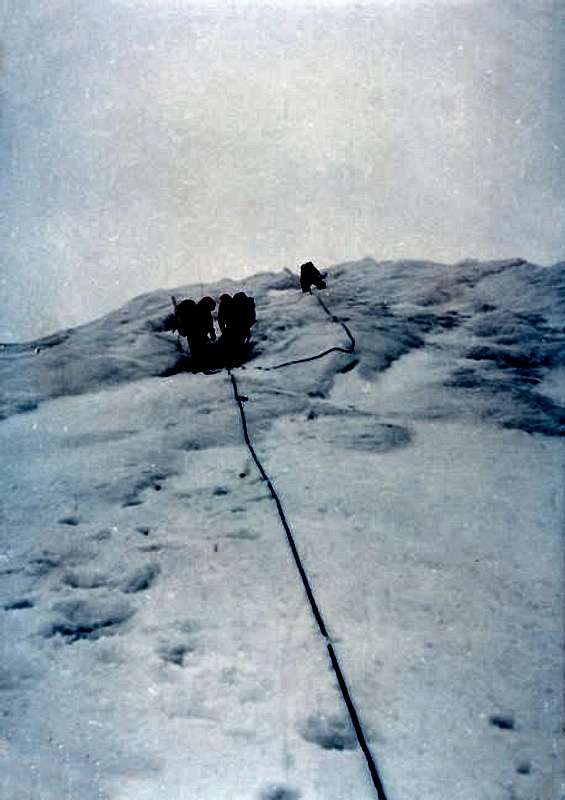
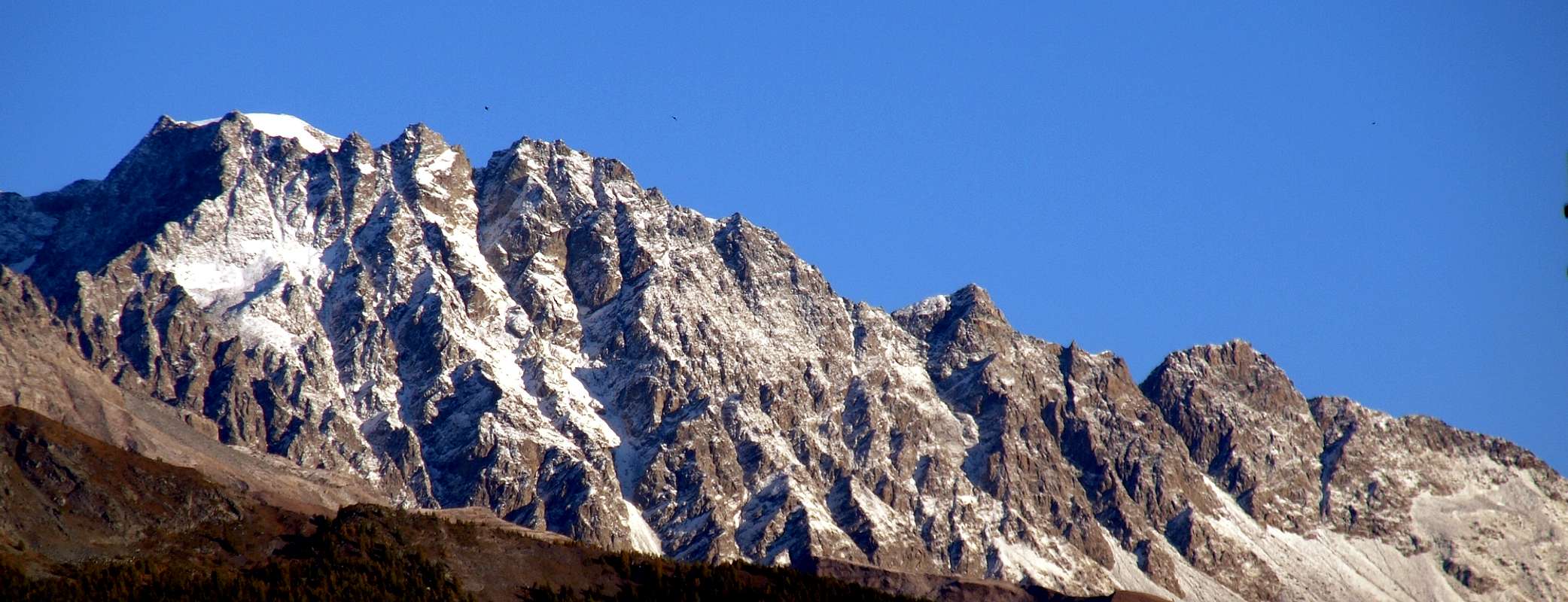
Getting There
BY CAR:
- From TORINO, MILANO, etc: Motorway A5. Exit at IVREA or Quincinetto (PIEDMONT).
- From IVREA Town: before in West to Aosta, after in Northwest to Gignod, Etroubles, Saint-Oyen, Saint Rhémy en Bosses, (Southwestern and Northwestern Sides) and in North to Allein, Doues, Valpelline Municipalities.
- From Courmayeur Resort: before in East to Aosta, after in Northwest to Gignod and in North to Allain, Doues, Valpelline and Ollomont Municipalities.
- From Aosta Town to Allein and Doues Common in By Basin. From Aosta City towards Variney Fraction and Gignod Commune (988m) with Great Saint Bernard SS.27 up to the alternative 1.074 meters, just before Condemine Hamlet (1.137m). Before crossing North the Artanavaz Torrent or Buthier de Bosses after in the Northwest towards Allein Municipality; from the fork 1.253 meters nearby this last, always with the Regional Road in Northeast, towards Doues From Allain/Doues to Ollomont/Valpelline Communes with By Basin From Allein Commune (1.251m), with Regional and Municipal Roads, to By Basin; from the entrance of this (various alpages reached by private dirt farms roads), through paths, up to the Mont Saron Southern Antesummit (2.681m) and traverse on crest to Tête de la Praz (2.751m) and Crou de Bleintse (2.824m). From Doues Commune (1.176m), with in asphalt Municipal Road, to By Basin; from this, with paths or dirt roads, to Mont Saron (2.681m),Crou de Bleintse (2.824m), Letey Refuge below Champillon Pass (2.430), Mont Chenaille two Summits (3.144m), Tsa d'Ansermin (2.388m) and Monte Rotondo (2.572m). From Ollomont Commune (1.356m), trhough noumerous paths and various upper private dirt farms roads, towards the By Conca; from this numerous routes in all directions up to the Maria Cristina Rosazza at Savoie Bivouac (2.674m), nearby the Bégno Bà or Bas Hill.
- From Aosta Town to Ollomont Common in the homonym Valley.
- From Aosta City towards Variney Fraction up to the alternative 786 meters (Savin Hamlet); continue North with the Regional Road towards Moulins between the two Torrents Rio Artanavaz also called Buthier de Bosses and Buthier de Valpelline, Rhins, Collin, Creusevy, Chanodaz, Liarey, Fabrique, Chez-les-Chuc Villages reaching in the Northeast Valpelline-Les Ansermins Municipality (996m). At the subsequent crossroads 1.059 meters (Chez-Cailleur Hamlet) turn left (North-northwest) reaching Chez-Collet, Clapet, Vesey Villages and Ollomont-Cognen Common (1.356m); continue North along the Buthier d'Ollomont towards Rey, Vaud, Glacier or Glassier (1.562m) Villages. From this towards the Refuge Franco Chiarella-Amiante (2.979m), Filon Alp (2.478m), Bonne Mort Pass (2.646m), Fenêtre Durand Hill (2.797m), Nino Regondi Bivouac (2.599m) and Lakes, Tsa de Berrio Alp (2.165m), Cormet Hill (2.354m) and Breuson Hill (2.194m).
All Routes description from Conca di By/Comba Berruard
by "Faustin" Savoye
From South-southwest Ridge on watershed with Southwestern Face, VELAN Southern Face from left (most Western Side and above Comba Berruard) * South-southwest Ridge integral: July 27th, 1997, Osvaldo Cardellina, solo; in descent from Quota 3.650 meters to Molline/Menouve Valleys, after the ascent on Northeast Wall of Quota 3.708 meters. PD/PD+/AD-, with brief various steps of I°/I°+/II/II°+ and one of III° on rock; in descent from the Quota 3.650 meters to the base at 3.076 meters under the Southwestern Face; 1h'45/2h'15. In ascent from the base 3.076 meters up to the Quota 3.650 meters, where the summit crest and besides border ridge turn to the East; 2h'30/2h'45'. This ridge can be more easily crossed by the Sella di Faceballa and therefore neglecting the initial part, which originates with a deviation towards the Vallone di Molline from a height of 3.076 meters. So in this case you can start from both sides of the hill (Molline and Conca di By-Berruard sides). HISTORICAL and PRACTICAL NOTE: this crest had been climbed in the final part with descent by a group of roped climbers on August 16th, 1890 (Carr & Companions) and partially in ascent with variant before preceding for a short stretch and after just over the "Diagonal Route" from Faceballa Saddle, by Gino Buscaini and its wife Silvia Metzeltin on October 31th, 1970. This, of July 1997, instead is the sole ascent complete ed integral personally known and also in mountaineering literature (see just below). This ridge is not made either on the Menouve-Molline Vallons (West) side or on the By-Berruard side (East), since the climb along the large Southeastern great Couloir is preferred, which has been followed even downhill on skis in the last two decades. It should be noted that, especially in well-transformed snow conditions (generally in late spring), the same can become, if not easier, certainly less dangerous due to the fall of stones (given the glue capacity of the snow); nevertheless, great attention must be paid to the state of the same and the relative temperatures in order not to incur the risk of snowslides or avalanches. In addition, the ascent in day starting from the Village of Glacier also Glassier (1.562m), in the Ollomont Valley, must be considered an excellent test of physical endurance and therefore requires not only an equally technical background. However compensated by a fast descent on skis, while the "ancient" ascents on foot in all day long (perhaps starting from the distant Champillon shelf) always remain "mythical" undertakings, as in the first winter ascent of December 28, 1904 with departure at 2 hours from the Alpe di Champillon, near the homonym plain, (Evanzio Blanc with the Abbots Valérien Jaccod and the very strong Pantaléon Bovet). On the occasion, however, the same avoided the "lower" part, preferring to climb from the East to the Sella di Faceballa (2.880m), and then insert it into the gully. So they too avoiding the South-southwest Ridge. Or as in the descent (partially in the "high" part of the ridge and then along the entire gully) of August 16, 1890 (Ellis Carr, William Martin Conway, F.M. Davies with the Swiss guides Ulrich Kaufmann and Joseph Marie Lochmatter); In addition, the first entire ascent of the gully is to be credited to the Abbots Pantaléon Bovet and Joseph Henry, on June 14, 1904.Not to mention the "eternal" approaches, which took place on foot or at the back of a mule. Still another thing is the climb in the presence of "verglass"... From Comba Berruard/Conca di By: * Faceballa Saddle to the South-southeast Face: Gino Buscaini and Silvia Metzeltin Buscaini, Oct. 31th, 1970; short variant, of secondary importance, through the Little Saddle or and better a Carving 3.450 meters about, with a brief stretch, skirting in right or East a small gendarme, on South-southwest Ridge and final part by South-southeast Wall in ascent; probably with more safe route in respect to the "Diagonal Via" of July 1976 and also to route into the parallel great couloir of a group roped climbers in August 1890. Descent trhough the first "Direct Route" on Southwest Face before to suspended and interrupted Velan's Glacier, after to Molline Vallon. Important remark: (since 2005 until actually, a homonym bivouac in existance at the altitude of 2.415 meters above a grassy promontory just to the left by the Molline Torrent). PD/PD+/AD-, with brief various steps of I°/I°+/II/II°+ and one of III° on rock; in ascent to Quota 3.650 meters from Faceballa Saddle (2.880m) 2h'30/2h'45; 6h'00/6h'30 by Savoie Bivouac (see also above).
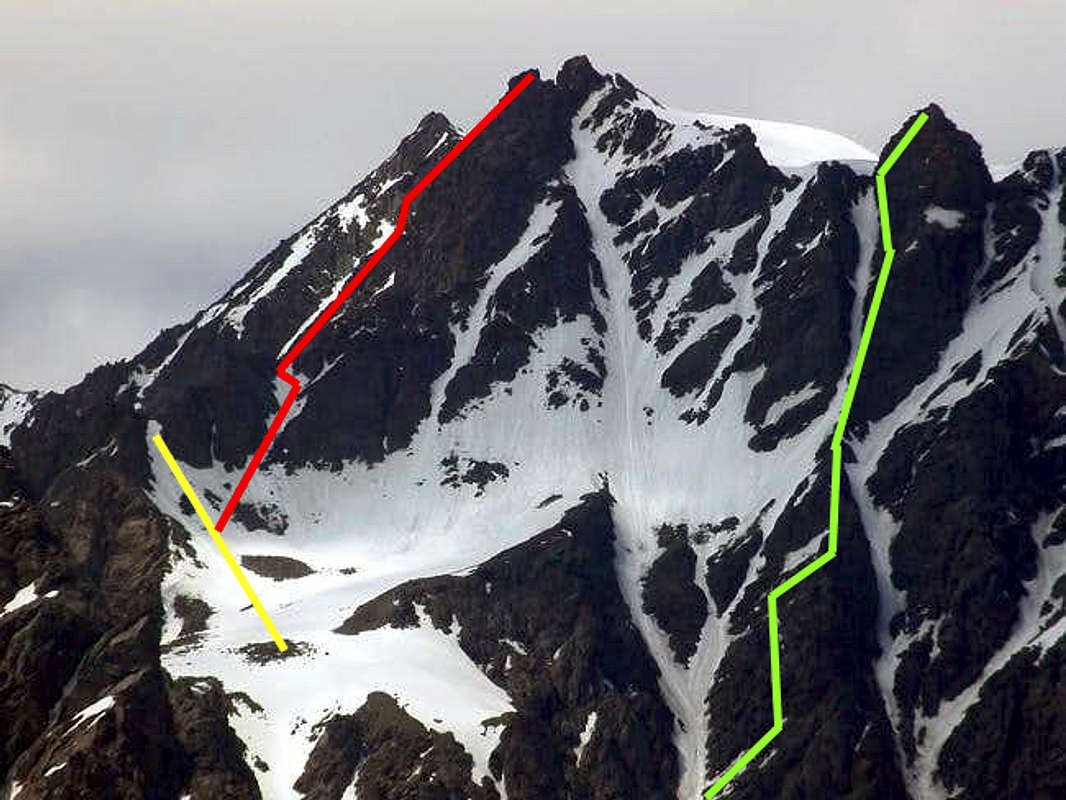

VELAN Southern Face HORNS's ROUTES from left (West and above (Comba Berruard/By Basin): * Southern Face West Horn (3.620m) on the "Hourglass Pillar": Osvaldo Cardellina, solo, July 25th, 1997, in ascent through the, with the said and baptized by me, "Hourglass Pillar"; always lone and in day. PD+/AD-/AD/AD-, with various steps of II°+/III°/III° on rock. 3h'30/4h'00 from the base to Velan's Summit; 5h'00/5h'30; from Rosazza at Savoie Bivouac (2.679m), 5h'00/5h'30; from Glacier also Glassier Hamlet (1.562m) 7h'00/7h'30; from Champillon Parking into homoym plain (2.050m) 7h'30/8h'30. Danger of falling of stones; this itinerary is not yet repeated and in any case it is rather inadvisable. *West Horn Western Brèche (3.610/2m~): Osvaldo Cardellina, lone, July 25th, 1997, in descent by and through the just adjacent "Narrow Gully/Couloir", always so called by me on occasion of the first climb. PD+/AD-, with various steps of II°+/III°/III°/III°+ on rock and degrees, in descent from 65°/60° to 40°/35 in ice or in snow. A glacial path, not at all easy, that climbs linearly with long diagonals alternating in the direction and that, about halfway along the route, overcomes a strip of rock on a rib that comes from the Eastern Velan Horn (3.618), to then come together at an altitude of about 2.930/50 meters with the "Hourglass Pillar" descending from the just adjacent and parallel Western Horn (3.620m). The same increases progressively in steepness up to the exit, which can become complicated in the presence of verglass on the terminal rocks, not often easy. This route requires, especially downhill, excellent snow settling and good ice experience. 2h'30/3h'00 from the Western Brèche to the base at 2.705/10 meters in altitude on Comba Berruard, always into the wide By's Basin; 5h'00/5h'30; from Rosazza at Savoie Bivouac (2.679m), 5h'00/5h'30; from Glacier also Glassier Hamlet (1.562m) 7h'00/7h'30; from Champillon Parking (with wooden fountain supplied by the cold, underground V'lan's waters; 2.050m) 7h'30/8h'30. Danger of falling of stones; this itinerary is not yet repeated and in any case it is rather inadvisable. * Eastern Horn (3.618m~) Southern Pillar: Osvaldo Cardellina, lone, September 27th, 1998, in ascent by with integral descent in day into the great Southeastern Couloir to Comba Berruard into By 's Basin. PD+/AD-/AD/AD-, with various steps of II°+/III°/III° on rock. 3h'30/4h'00 from the base in altitude of about 2.710/15 meters to Velan's Summit; 5h'00/5h'30; from Rosazza at Savoie Bivouac (2.679m), 5h'00/5h'30; from Glacier also small and isolated Glassier Hamlet (1.562m) 7h'00/7h'30; from Champillon Parking (nearby a stone cross just after the just after the wooden fountain with Mont Velan's waters source; 2.050m) 7h'30/8h'30. Long and dangerous climb due to the bad rock with often uneven and not stable handholds and footholds with subsequent relaiive danger of falling of stones; it also requires the ability to identify the route and link the various and numerous passages.The direction of ascent is dictated by three large Northeast-Northwest-Nortrheast zigzagging diagonals, the last of which departs from a clear "bottleneck" neighboring the "Narrow Couloir" at an altitude of around 3.475/85 meters. This itinerary is not yet repeated and in any case it is rather inadvisable, although surely it is more direct and very less dangerous than the via climbed on June 28th 1920, such as to force long crossings below Teeth and Horns. In the first ascent, descent into the Southeast Couloir to Comba Berruard 1h'30/2h'15.
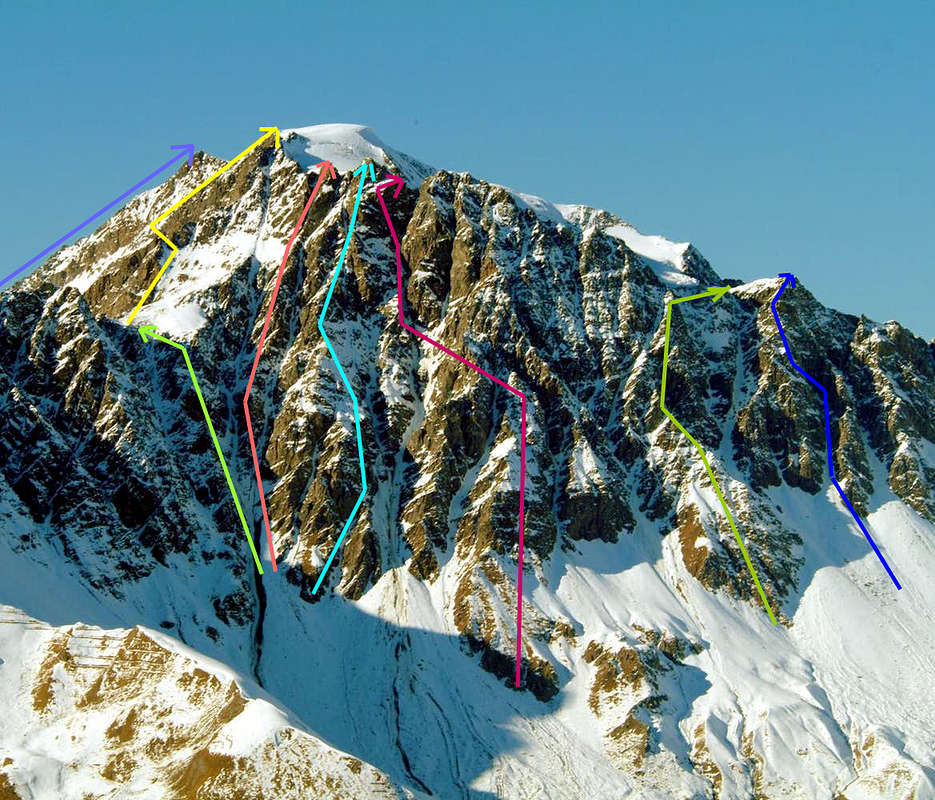
* West Horn Western Brèche (3.610/2m~): Antonio Frisoni, Cesare Negri, Luigi Vavassori and Carlo Virando, June 28th, 1920; leaving to the right or East the wide East-southeast faces of the Tête de Riondet also Testa d'Ariondet (3.485m), from base in altidude about 2.790/95 meters of the VI° or Velan's Little Tooth (in high just detached East-southeast; about 3.530/35 meters) or more Eastern Pillar, also called by me, "Angular Broken Double Southern Pillar", before by direct ascent for about 350/70 meters; after with progressive diagonal traverse to the left or West. Passing a first helved snowy or icy gully, below the "Hanging" Pillar followed by a second gully and crossing in the half the "Streched" Pillar, a second couloir below the five Teeth; after continuing with more steep ascent, always in diagonal, on the third or Central great Couloir (under V'lan's Teeth) and diagonal ascent on Eastern Horn (3.618m) reaching the Eastern Brèche between the same and the first from West or I°V'lan's Tooth (3.395m). Complicated and complexe climb combined with the following crossing always at the left or West on South Pillar of more Western Horn). For mountaineers much expert and good trained, but still anachronistic ascension and out of all logic. PD+/AD-, with various steps of II°+/III° on rock and degrees from 40° to 60° in ice or in snow. 4h'15 from the base to Velan's Top; 5h'15/0'30 from Rosazza at Savoie Bivouac (2.679m). According to the first climbers: unsafe holds and continuous falling of stones, also due to the exposure with a long crossing. It requires continuous vigilance, this itinerary is not yet repeated and in any case it is really inadvisable.
South Face VELAN's TEETH, TESTA d'ARIONDET, MONT CAPUCIN, COL des CHAMOIS, MONT CORDINE ROUTES (from left or West to the right or East): * Teeth 's "Carving" or Jags's Saddle (3.557m~): Osvaldo Cardellina, solo, August 27th, 1995, with ascent in day and descent along the Southeastern great Couloir or route of August 1890 to Comba Berruard. PD+/AD-/AD/AD+, with some passages in rock of II°/II°+/III°-, in the midst and highest part and degrees from 35°/40° to 60°; in ice or in snow. 3h'00/3h'15 from the base to Velan's Top, with direct ascent into the couloir to the right or East in respect to "Hanging" Pillar, traverse right/left (East/West) on the same up to the third or Central Couloir (to the leftt or West in respect to "Hanging" Pillar) and by this to Teet 's Carving; 5h'00/5h'30 from Rosazza at Savoie Bivouac (2.679m). Requires continuous vigilance and very attentive caution; this itinerary is not yet repeated and in any case it is quite inadvisable. * Southeast Face under the Testa d'Ariondet, with deviation to trhe right or East-northeast towards the East-northeast Ridge or Italian Standard Route : Mario and Nunzia Borelli, 25 July 1916. From F to PD/PD+/AD-, with some steps of II°/II°+/III°-/III° on rock along the main rib descending from a little evident antesummit to the East . This ascension was made in 8h'00 for the first climbers from the base about 2.700 meters, near one small cross in altitude 2.663 meters around just above Faceballa Alp (2.385m), up to the Col du Capucin (3.376m); with ascent before to the East in respect to "Angular Broken Double Southern Pillar", after by direct climb for about 350 meters and new diagonal ascent in direction to the right up to the final difficult rocky jump below the Top. After giving up this last challenging stretch of the climb, the group of of roped climbers of 1920 continued at the end of their vertical line; the ascent finally continue with climbing in traverse again to the right or East, but almost horizontal via, reaching the enough large pass or Col du Capucin (3.376m), on East-northeast Ridge from Valsorey Pass. This via requires continuous vigilance and very precise caution; this itinerary is not yet repeated and in any case it is little advisable. Probably, by the base 4h'00/5h'00 from Rosazza at Savoie Bivouac (2.679m), 6h'00/6h'30, from Glassier Village (large parking near the Buthier Torrent; 1.549m) even 8h'30/9h'30 * South-southeast Slope of Mont Capucin towards the East-northeast Ridge : October 17th, 1912, Abbot Joseph-Maria Henry with guide Théodule Forclaz after an attemp into the "Couloir des Chamois". From F to PD/PD+/AD-/AD (?), from Rosazza at Savoie Bivouac (2.679m), with traverse to the West and, after the Torrent de Plan Bagò, oblique ascent on debris slope upto the end of couloir, often snowy, descending from Capucin Pass. Reached the Southeast rib after around 120/130 meters of climbing, to overcome a series of three gendarmes and by followed delicate steps directly to the Summit This ascension was made in 9h'00' for the first climbers from the base about 3.020/30 meters, just above Plan Bagò (2.436m) and starting from the last up to the Col des Chamois (3.259m); pratically direct ascent. * Through the Southeast Couloir of Col des Chamois (between the Combe de Berruà and middle sector of Valsorey's Glacier) and with first traverse on the East-northeast Ridge : September 26th, 1912, Abbot Joseph-Maria Henry with guide Théodule Forclaz. First known traverse: July 21th, 1902, C. Montandon, A. Moret, A. Niggli and R. Zeller, by probably route from North to South (Valsorey's Glacier/By's Basin). From F to PD/PD+/AD-, not a simple, instead dangerous and probably no longer traveled route since it had a unique exploratory sense; in fact the nearer and safer Colle di Valsorey (3.107m) is to be preferred. This ascension was made in a sole 3h'00 for the first climbers from the base about 3.020/30 meters, just above Plan Bagò (2.436m), up to the Col des Chamois (3.259m); with pratically direct ascent. *South-southeast Slope of Mont Cordine and East-northeast Ridge : August 17th, 1939, Giovanni Soncelli and Paride Tagliabue. Repeated by Ettore Castiglioni with a company at the end of August 1943. From F+ to PD-, from bivouac neighboring of Boégno Bà or Bas Pass (2.674m) to address him towards Northeast reaching after about one hour the base of the face in altitude 3.050/70 meters around; continue in the center of the same through brief rock jumps alternated with debris and dangerous slabs. After about 100/10 meters to cross to the right or East over a enough better rocks; then returning to the left or West through not easy slabs reaching a chimney and by this to Italian/Swiss border not far from the true Summit (3.329m). This ascent was made in more of 4h'00, by the first climbers on August of 1939.
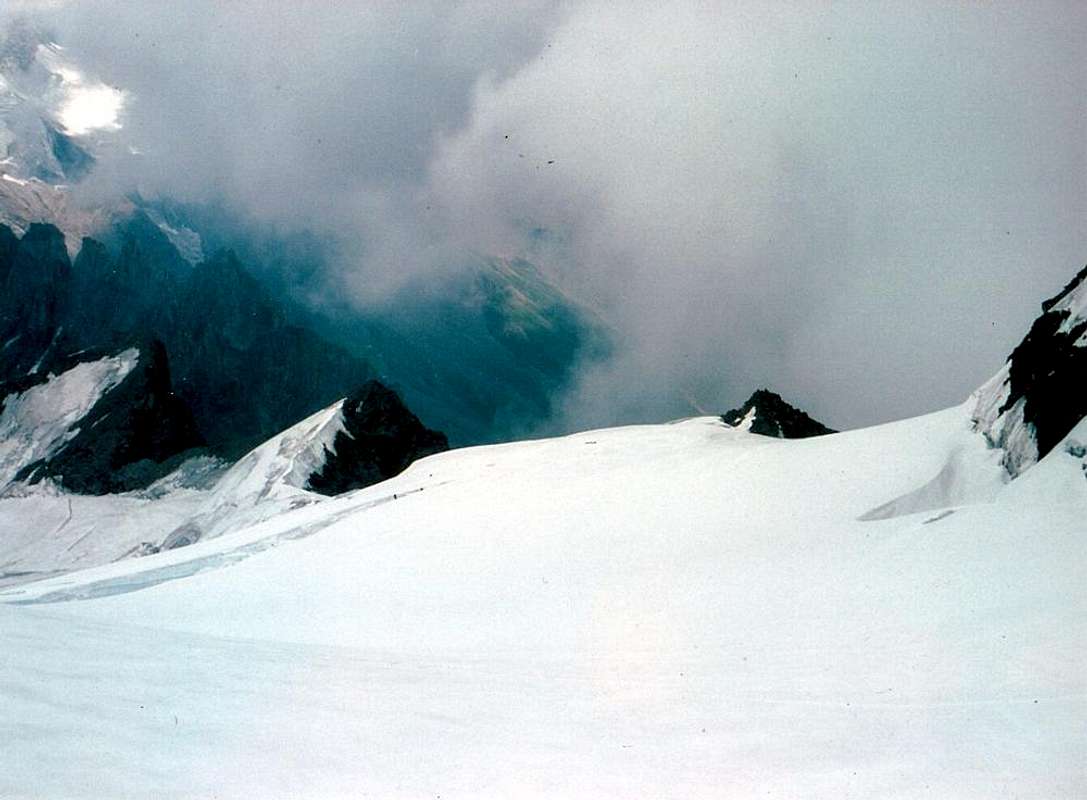
DOUBLE CONNECTION between the Rosazza at Savoie Bivouac and the Cabane du Velan via Col de Valsorey, the homonymous glacier, Col de la Gouille and Glacier de Tseudet Logically there is also the possibility of connecting the two huts with departure from both Italy near Bivacco Rosazza-Savoie on Boègno Bàs (2.651m, 2.674m) through the Col di Valsorey (3.107m) and from Switzerland from the Cabane du Velan (2.659m), below Petit Velan (3.223m), and via the Col de la Gouille (3.149m) through the middle part of the Glacier de Valsorey and the entire Glacier de Tseudet, in its lower part. Reached the Col de Valsorey (yellow signs with small path numbered 3 and little cairns) do not go down directly on the Glacier de Valsorey (crevasses and danger of falling rocks) but go up towards Mont Cordine (3.229m) with the possibility of descending on it from its before rocky after snowy "Plateau de Cordine" (about 2.215/25 meters) through an easy snowy slope or with the variants from the above, therefore including the descent of 70 meters with fixed rope, ladders and chains to the underlying Col des Chamois (3.259m). From each of these points and with descent on a modest glacial slope, connect with the Swiss Normal Route (just below the islet that contains the upper seracs fall) and then continue to the Northwest with a modest ascent first and with a steeper descent after passing the lower "seraccata" of the Glacier de Valsorey. With a convex path on the right (West), go down along the basal rocks of the ridge that from Mont de la Gouille (3.212m) goes up towards the Arête of the same name with its various altitudes. Still following the left orographic edge of the glacier, go below the Col de la Gouille to less than 3.100 meters , identifying the area of ascent to the same by means of red signs; go up the small wall using fixed ropes 3h'00/3h'15 from the Rosazza-Savoie Bivouac, 2h'00'/2h'15 from the Colle di Valsorey). From the same, descend rapidly on the underlying Glacier de Tseudet and with a semi-circular route in the Northwest reach the base of the North-Eastern side of the Petit Velan; with a slightly steeper descent on the western edge of the glacier reach the Cabane du Velan (2.659m), located at the base of the Nordeast Edge of the same (1h'20/1h'30 from the col and 4h'30/5h'00 from the departure). For the reverse route, calculate 1h'00/1h'30 more' with the partial times of 2h'00/2h'30 at the Col de la Gouille and descent on the Glacier de Valsorey, 2h'00/2h'30 to Valsorey's Col and 'another hour' to reach the Rosazza at Savoie Bivouac. This crossing can also vary over time both for the conditions of the opposite two glaciers and for those of the weather's quality. In the absence of appropriate knowledge of the area, do not undertake with poor visibility. In any case, this crossing is almost never entirely not traveled, also because it is more logical to reach the two refuges from the respective valley bottom.
Difficulties
From PD-/PD with short stretches to PD+AD-/AD/AD+ for all the routes described above.
Italian Southern Routes on South-southeastern Face of Horns & Teeth, by Osw
Essential Gear
Rope, ice axe and crampons; helmet, carabiners, rock and ice nails for the more or less demanding or most challenging and difficult routes.
Corda, piccozza e ramponi; casco, moschettoni, chiodi da roccia e da ghiaccio per le vie più o meno impegnative oppure per quelle più difficili.
Mountain Conditions
- You can get meteo information at the official site of the Regione Valle d'Aosta:
- Valle d'Aosta Meteo
Books and Maps
- "Guida delle Alpi Occidentali", di Giovanni Bobba e Luigi Vaccarone C.A.I. Sezione di Torino Volume II (parte II), 25 Maggio 1896.
- "Guida dei Monti d'Italia-Alpi Pennine" (Vol. I°) di Gino Buscaini-Club Alpino Italiano/Turing Club Italiano, Luglio 1971 (in Italian).
- "I Rifugi della Valle d'Aosta" di Stefano Ardito, Ed. Guide iter, Febbraio 2003.
- L'Escursionista "Valpelline, Saint Barthélemy" (carta n° 6) 1:25.000.
- C.N.S. "Mont Vèlan", foglio 1366, 1:25.000.
- Kompass "Breuil/Cervinia-Zermatt" Carta turistica 1:50.000.
- I.G.C. Istituto Geografico Centrale "La Valpelline, Ollomont, Saint Barthélemy", (carta n° 115) Map1:30.000.
Important Information
- REGIONE AUTONOMA VALLE D'AOSTA the official site.
- FONDAZIONE MONTAGNA SICURA Villa Cameron, località Villard de la Palud n° 1 Courmayeur (AO) Tel: 39 0165 897602 - Fax: 39 0165 897647.
- SOCIETA' DELLE GUIDE DELLA VALPELLINE Etroubles-Strada Nazionale, n° 13 - Tel +39 0165 78559 - Valpelline-Loc Capoluogo, n° 1 - Tel +39 0165 713502 (AO) Italia.
- A.I.NE.VA. (Associazione Interregionale Neve e Valanghe).
Useful Numbers
- Protezione Civile Valdostana località Aeroporto n° 7/A Saint Christophe (Ao) Tel. 0165-238222.
- Bollettino Meteo (weather info) Tel. 0165-44113.
- Unità Operativa di Soccorso Sanitario Tel. 118.




